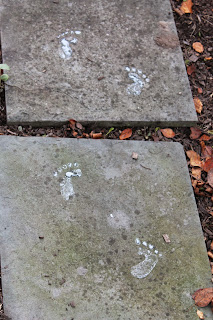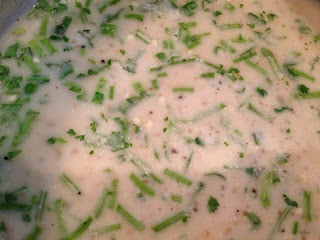Hello again, world of blogging, bloggers, and readers! It's been a couple of busy months but now as things settle down, I'm getting back to "Another ABCD Mommy" and to maintaining my weekly posts. During my time off, I missed blogging about a couple of very important holidays so I'll be sure to fit them in when I can, starting with this post. Then, beginning next week, it's back to my schedule of recipe posts on Monday, baby related posts on Wednesday and on Friday, posts on anything my heart desires! So, here we go...
***
Growing up in America, one of the most important things for me is to maintain the festivity surrounding our Hindu holidays. One of my favorite memories from my own childhood is the special feeling of celebrating a day that is just an ordinary day for everyone else at school and work. It's not always easy to get into the festive spirit when daily routines do not pause for a moment, but making that extra effort to make sure we do is so important. I truly feel it's one of the best ways to provide Indian children growing up here with a connection to their cultural roots.
Most Hindu holidays are deeply rooted in religion. The religious aspects of every holiday are very important to me, but they are also personal, and therefore, will not be a topic which is discussed in this forum. What
will be discussed are some of the wonderful cultural traditions that come along with each and every holiday, and how I and my family were able to capture them...
At the end of August came my single most favorite day of the year
- Krishna Janamashtami. This is the day when we celebrate the birth of Krishna, one of the most beloved incarnations of Lord Vishnu. The countless stories of Krishna from his childhood to his adulthood are told over and over, from generation to generation, and they always bring a smile to our faces while also providing us with important wisdom and life lessons.
Baby Krishna stealing butter
The image of Krishna, as a young child, stealing butter is one of the most iconic. And the peacock feathers are something that is always associated with Krishna. While there is a philosophical meaning behind this, culturally, when we celebrate Krishna Janamashtami, if there are any little babies in the house, we dress them up like baby Krishna with a peacock feather in their hair :-)
Sadly for me, when I tried to tie the peacock feather in my son's hair, he just would not cooperate, so I had to settle with using it as a decoration somewhere else. I'm hoping for better luck in that department next year...
Flowers, especially red, white and yellow ones, are used in decorating the home. We used these flowers in making garlands to decorate Krishna statues as well as to hang in doorways.
And then there's my favorite part of decorating for Krishna Janmashtami... creating small footsteps to represent Krishna's little feet walking into the house. The meaning behind this, for me, is infinite, and seeing those little footprints coming into the house really brings a huge smile to my face. The material we generally use for creating the foot prints is made by mixing rice flour and water until it is a thick paste.
This year, we tried to use my son's feet to make the imprints, and had some luck with it (better than the peacock feather) but it was still quite a challenge. The slightly sloppier ones are his little feet. The neater footprints are made by dipping the side of your fist into the paste and stamping it on the ground and the using your fingers to make little spots for the toes.
And of course, no festival is ever complete without lots of delicious food, which we were also blessed with. I don't have any pictures beyond what's posted above, but hopefully it gives you a good idea of how we celebrated
Krishna Janmashtami this year. There are so many cultural traditions to take part in, and since I'm a relatively new to being the one putting together celebrations, a rule of thumb that I like to try and abide by is to add in one more tradition with every year of celebration.
I'm happy to restart my blog with this post, and I wish everyone a (belated) very happy Krishna Janmashtami! Next Friday, I'll write about how we celebrated another wonderful holiday that came along in the first week of September this year - Ganesh Chathurti.
I hope everyone has a wonderful weekend, and hopefully I'll see you back here on Monday!



















.JPG)
.jpeg)



.JPG)
